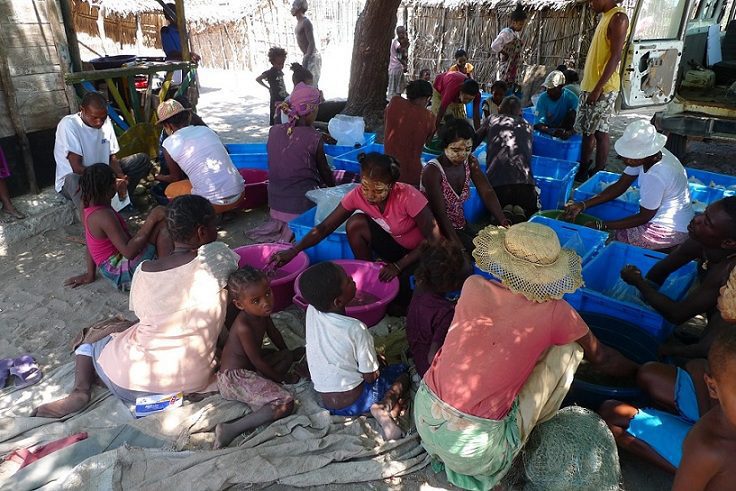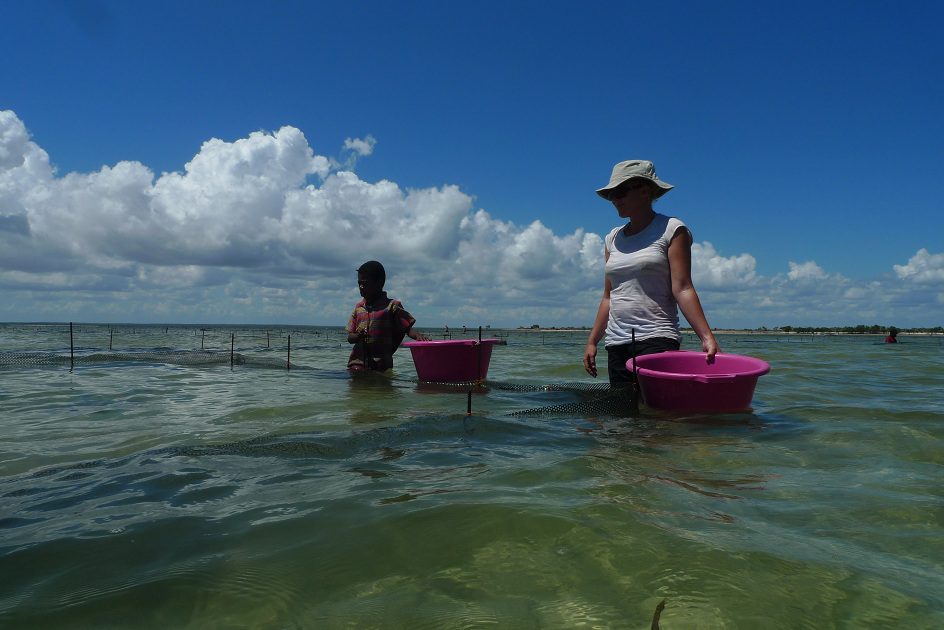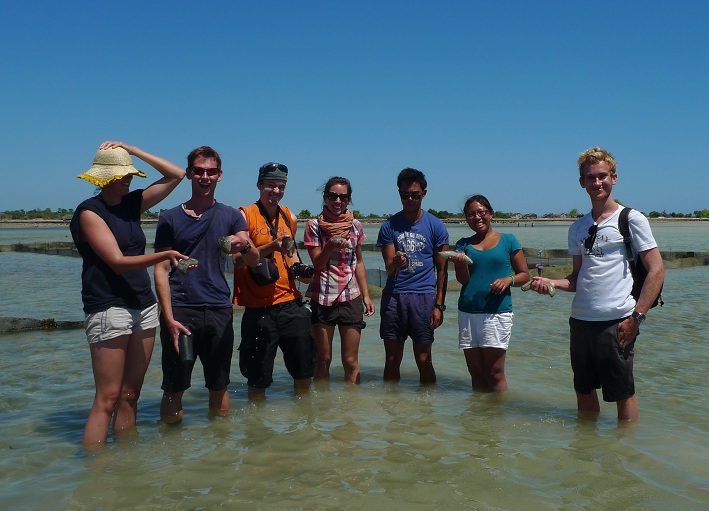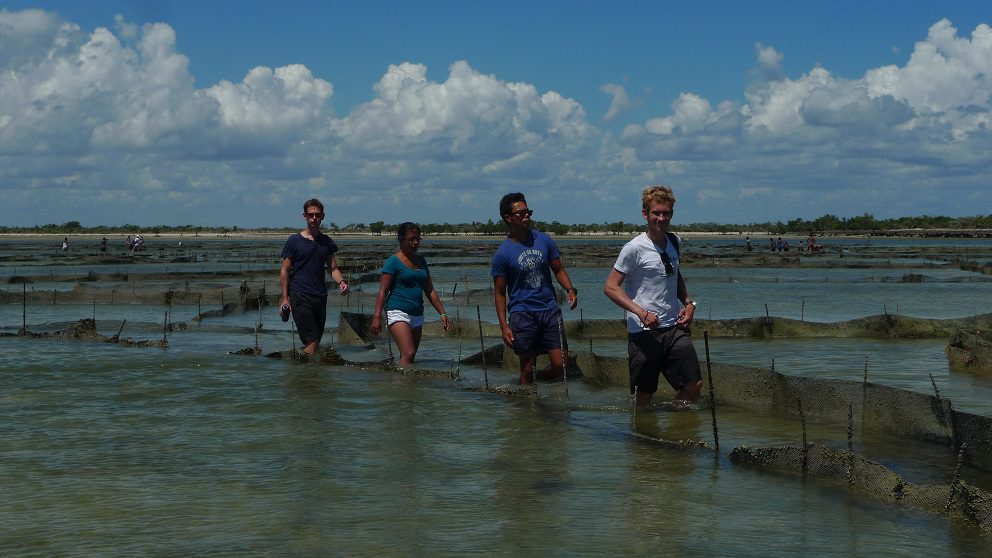By Johanna Medvey, Blue Ventures volunteer, Andavadoaka, Madagascar
We bump along the sandy tracks leading away from Andavadoaka, perched in our trusty ox carts as the sun rises and tinges the baobab trees pink. Our group of nine volunteers and three staff members are off to visit a nearby community involved in sea cucumber and seaweed farming. The final leg of our journey involves taking a motorised pirogue across the Bay of Assassins, to reach the village of Tampolove. The morning water is still and smooth, and sliding across it through the mangroves has made this trip worth it for me already! No matter how much time one spends here, it is impossible to not pause and be amazed by the natural beauty, the bright colours or the reflection of the sun on the water.
We arrive in Tampolove to a breakfast of boko-boko (delicious doughballs) and hot drinks at ‘Chez Richard’, where we’re also staying for the night. This village is much smaller than Andavadoaka but the huts are very similar, there are pirogues lining the shore, and the children are equally fascinated by us vazaha (foreigners).

Once we’ve been assigned our bungalows, we join the group of people in the middle of the village counting and distributing the baby sea cucumbers. Later, all of us pair up with local farmers and help them carry the juveniles out to their pens during low tide. They’re carefully placed in their designated sections of the pens, clear from seagrass and predatory crabs.

While the older generation is busy making sure that everything is well prepared and the nets are fixed, the children entertain us by finding some bigger sea cucumbers and laughing at our first encounters with them! (The funniest characteristic of sea cucumbers is that they squirt water as one takes them out of the sea and it looks like they are peeing, something that greatly amuses us all…)

We’re then given a short explanation about seaweed farming by Zizienne, a dynamic woman from Tampolove who has recently been certified as an aquaculture technician by the University of Toliara’s Marine Science Institute. Both the seaweed and the sea cucumber farms provide alternative livelihoods for the community of Tampolove, which historically has been entirely dependent on fishing. These projects bring the entire village together, from the very young to the elderly generations, and diversify their income-generating activities.

In the afternoon we visit a nearby mangrove, and swim in the current surrounding a small island almost until sunset. The water is really warm, and it almost feels like the “Lazy River” in an amusement park…
For dinner we are again divided into pairs and invited to eat with local families. The family I join consists of just one woman, as her children are studying in Toliara and her husband is away working. The language barrier prevents us from having a long discussion, but I use some of the Malagasy we had been taught and also get to know a bit better the staff member who I’m paired with. The menu is rice, beans and squid, and it’s delicious!
We gather again around the central table at ‘Chez Richard’ with some cold Three Horses Beer, and wait until it’s time to go sea cucumber harvesting at low tide. Later the villagers gather at the communal building next to the coast, light dozens of petrol lanterns, and we walk off into the dark with some big buckets. This was undeniably the most memorable part of the day… The night is suddenly transformed into some sort of magical festival, with the warm lights of the lanterns dancing over the dark water like fire flies.
We all help to collect the sea cucumbers from their pens, and afterwards gather around the measuring points (installed on tables in the middle of the water) to check the weight of each sea cucumber, one by one. Each one that’s more than 400g (commercial size) is categorised by its weight and placed in the big plastic boxes ready to be sold, while each one that’s smaller is given back to the sea to grow some more. This takes quite a while, but is really fun!
We finally get to bed around 3am, and return to Andavadoaka after a few hours of sleep. The visit to Tampolove was definitely one of the highlights of our “extra-curricular activities” and I found it very interesting to discover more of Blue Ventures’ work and to see another village. This project for me is yet more proof that BV’s integrated approach of focusing on population, health and environmental issues together makes sense and provides long-term solutions. Such insight makes our experience in Madagascar even more meaningful, and has inspired us to continue caring about these efforts even from home.

